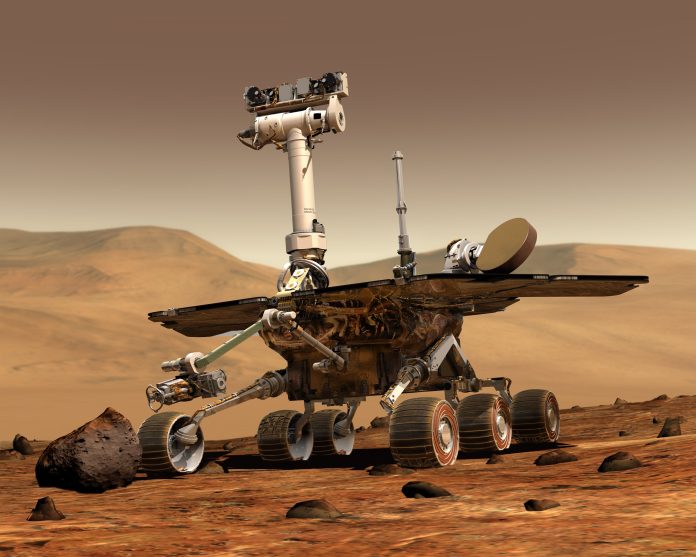As I delve into the fascinating world of space exploration, one of the most intriguing subjects that captures my attention is the Mars rover. These remarkable machines have been our eyes and ears on the Red Planet, sending back invaluable data that enhances our understanding of Mars and, ultimately, our place in the universe. In this article, I aim to explain what Mars rovers are, how they operate, the missions they have undertaken, and their significance in the broader context of space exploration.
What is a Mars Rover?
A Mars rover is a robotic vehicle designed to explore the surface of Mars. Unlike stationary landers, rovers are equipped with wheels and can traverse the Martian terrain, conducting various scientific experiments and gathering data. My interest in rovers often stems from their unique capabilities, allowing them to maneuver through obstacles, climb hills, and even analyze soil samples.
Key Features of Mars Rovers
Mars rovers are equipped with a multitude of features that enable them to perform diverse tasks:
- Mobility Systems: Rovers like Curiosity and Perseverance utilize advanced wheel designs and suspension systems to navigate the rocky Martian landscape.
- Scientific Instruments: These include cameras, spectrometers, and drills that allow for detailed analysis of the Martian soil and atmosphere.
- Communication Systems: Rovers communicate with Earth via high-frequency radio waves, sending data and receiving commands.
- Power Sources: Most rovers use solar panels or nuclear power to sustain their energy needs, which is crucial for long-term missions.
The History of Mars Rovers
The journey of Mars exploration through rovers began in the late 1990s. I find it remarkable to see how far we’ve come in such a short amount of time.
Sojourner
The first successful Mars rover was Sojourner, which landed on Mars in 1997 as part of NASA’s Mars Pathfinder mission. Although it was small and relatively simple compared to its successors, Sojourner laid the groundwork for future missions. It demonstrated the feasibility of robotic exploration and returned significant data about the Martian surface.
Spirit and Opportunity
In 2004, NASA launched twin rovers, Spirit and Opportunity. These rovers were designed for a 90-day mission but ended up operating for years, making groundbreaking discoveries. Spirit explored the Gusev Crater, while Opportunity examined the Meridiani Planum. Their longevity and success were pivotal in proving that rovers could operate far beyond their expected lifespans.
Curiosity
In 2012, the Curiosity rover landed in Gale Crater. With advanced scientific instruments and a larger size, Curiosity aimed to assess whether Mars ever had conditions suitable for life. Its findings, including evidence of ancient riverbeds and organic molecules, have reshaped our understanding of the planet.
Perseverance
The most recent addition to the Mars rover family is Perseverance, which landed in February 2021. It is tasked with searching for signs of past life and collecting soil samples for a future return to Earth. Its companion drone, Ingenuity, has made history by achieving the first powered flight on another planet, showcasing the potential for aerial exploration in future missions.
How Do Mars Rovers Operate?
Understanding how Mars rovers function reveals the intricacies of robotic exploration. Here’s a closer look at their operations:
Navigation
I find it fascinating how rovers navigate the Martian surface. They use a combination of pre-programmed commands and real-time decision-making. Equipped with cameras and sensors, rovers can identify obstacles, assess terrain, and choose the best path to their destination.
Data Collection
Mars rovers are equipped with various scientific instruments designed for data collection. For example, Curiosity has a laser that can analyze rock composition from a distance, while Perseverance carries a suite of tools for studying Martian geology. The data collected is transmitted back to Earth for analysis.
Autonomous Operations
While rovers can be controlled from Earth, they also have autonomous capabilities that allow them to make decisions on their own. This is crucial because of the time delay in communication—sending a command to Mars can take anywhere from 5 to 20 minutes. Hence, rovers must be able to navigate and perform tasks independently.
The Science Behind Mars Rover Missions
The primary objective of Mars rovers is to conduct scientific research that enhances our understanding of the planet. I believe that the insights gained from these missions are vital for several reasons:
Search for Life
One of the main goals of rovers like Perseverance is to search for signs of past life on Mars. This involves analyzing soil samples and studying the planet’s geology to determine if it ever had conditions suitable for life.
Climate Studies
Mars rovers also study the planet’s climate and atmosphere. Understanding the weather patterns and seasonal changes on Mars can inform future missions and help scientists understand the planet’s history.
Preparing for Human Exploration
Data collected by rovers is essential for preparing for future human missions to Mars. By understanding the environment, resources, and potential hazards, NASA and other space agencies can better plan for human exploration.
The Future of Mars Rovers
As I look to the future, the potential for Mars rovers is limitless. With advancements in technology, we can expect even more sophisticated rovers to be launched in the coming years. Concepts for future missions include:
Sample Return Missions
One of the most exciting prospects is the possibility of returning samples from Mars to Earth. Future missions will focus on collecting soil samples and bringing them back for detailed analysis, allowing scientists to conduct experiments that cannot be performed on Mars.
Collaboration with Human Missions
As we prepare for human exploration of Mars, rovers will play a crucial role in scouting terrain and identifying resources. I envision a future where rovers work alongside astronauts, aiding in exploration and ensuring human safety.
International Collaborations
Space exploration is becoming increasingly collaborative. Countries around the world are launching their own Mars missions, and I anticipate more international partnerships that will combine resources and expertise for ambitious missions to Mars.
Conclusion
In summary, Mars rovers are remarkable feats of engineering and exploration that have changed our understanding of the Red Planet. As I reflect on the journey of these robotic explorers, it is clear that they have opened new frontiers in science and paved the way for future explorations. The knowledge gained from past and current missions will undoubtedly inform our next steps in space exploration, ultimately bringing us closer to answering the profound question: Is there life beyond Earth?
For more information on Mars rovers, you can visit NASA’s Mars Exploration Program or check out the latest updates from European Space Agency.





.jpg?w=100&resize=100,70&ssl=1)
